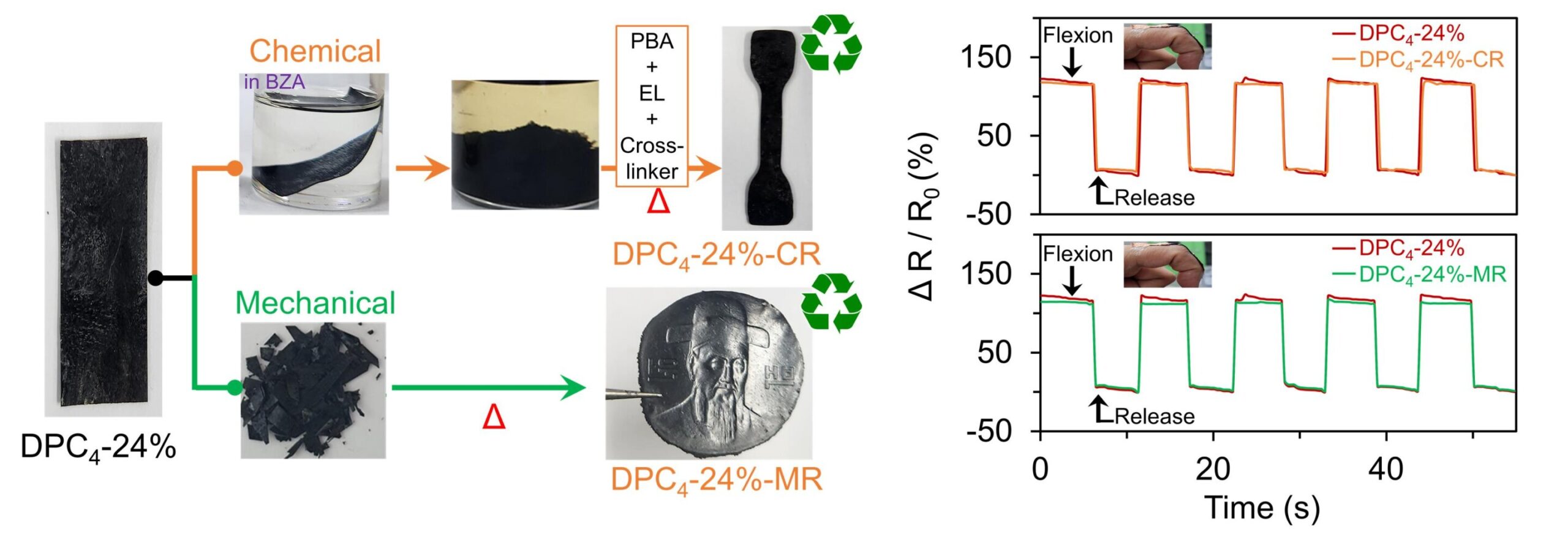Professor Chiyoung Park of the Department of Energy Science and Engineering at DGIST has developed a new material poised to advance high-sensitivity recyclable sensor technology. Working in collaboration with Professor U-hyeok Choi of Inha University, Park’s team created a recyclable high-sensitivity sensor based on the dynamic polymer network.
This next-generation material is garnering attention for its ability to combine environmental sustainability with high performance. The research is published in the Chemical Engineering Journal.
Existing high-sensitivity sensors have been limited by performance degradation due to fatigue and repeated use. However, the dynamic polymer network developed by the research team maintains excellent sensitivity and durability by using vinylogous urethane bonding. This bonding structure self-heals in response to external stimuli such as temperature, light, and pressure, preventing performance degradation even after repeated use.
The dynamic polymer network is also sensitive to various mechanical movements, heat, and light, and sensors based on the network excel at detecting human body movements. Researchers have demonstrated that the sensors can accurately detect finger bends, changes in facial expressions, and even swallowing movements in the throat. One of the biggest strengths of the technology is that it can maintain the same sensitivity after recycling without any degradation.
Addressing the growing issue of e-waste, the team designed the technology to combine recyclability with high performance. They believe the dynamic polymer network’s versatility supports repeated use and recycling, potentially leading to significant reductions in e-waste. Their work promises to have far-reaching implications not only in sensor technology but also in next-generation electronics, wearable devices, and medical equipment. The team continues to work on commercializing the technology for widespread industrial applications.
“Our material offers excellent processability and can be recycled mechanically or chemically,” said Professor Park. “The polymer network undergoes a simple recycling process, which we expect will extend the lifespan of electronic devices and wearable sensors, significantly reducing electronic waste.”
More information:
Gyeonghyeon Choi et al, Facile supramolecular processing of recyclable adaptive polymer composites for highly reproducible sensory materials, Chemical Engineering Journal (2024). DOI: 10.1016/j.cej.2024.154730
Provided by
DGIST (Daegu Gyeongbuk Institute of Science and Technology)
Citation:
Researchers create dynamic polymer network material for recyclable high-sensitivity sensors (2024, October 25)
retrieved 25 October 2024
from JDK
This document is subject to copyright. Apart from any fair dealing for the purpose of private study or research, no
part may be reproduced without the written permission. The content is provided for information purposes only.
